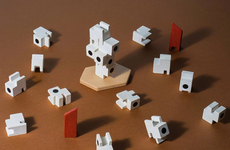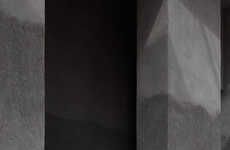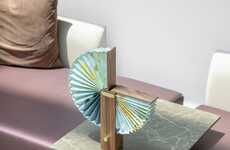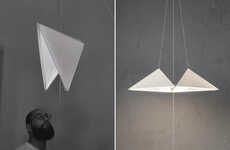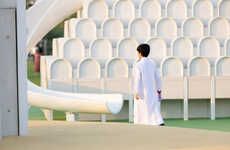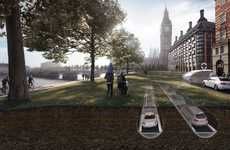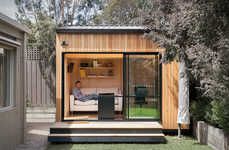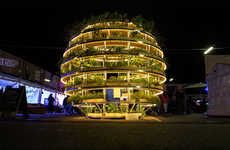
The 'Design Museum' London is Shaped Like the Kid's Game
Joey Haar — November 20, 2016 — Art & Design
References: designmuseum.org & dezeen
The new building for the Design Museum London is set to be unveiled, and its striking design elicits a sense of nostalgia for one's elementary and middle school days. The hyperbolic paraboloid roof of the building is immediately reminiscent of those origami fortune tellers that kids have made -- and continue to make -- to challenge each other to dares, spread cute rumors, and generally be kids.
The building, which is located in London's Kensington neighborhood, was designed by Dutch architecture practice OMA and architectural designer John Pawson. Pawson took charge of the new interiors of the Design Museum London, while OMA was responsible for the roof and other exterior sections.
Though refurbished, the origami-like roof is not a new design -- in fact, it was originally built in the 1960s for the Commonwealth Institute.
The building, which is located in London's Kensington neighborhood, was designed by Dutch architecture practice OMA and architectural designer John Pawson. Pawson took charge of the new interiors of the Design Museum London, while OMA was responsible for the roof and other exterior sections.
Though refurbished, the origami-like roof is not a new design -- in fact, it was originally built in the 1960s for the Commonwealth Institute.
Trend Themes
1. Origami-inspired Architecture - Architectural firms and design enthusiasts can explore origami-like designs as a source of inspiration for roof and exteriors of buildings.
2. Nostalgia-inspired Design - Designers can look to integrate playful elements of nostalgia in their architecture projects to evoke a sense of playfulness and whimsy.
3. Refurbishing Iconic Designs - Companies revamping older structures can consider retaining noteworthy aspects of the original design while modernizing specific aspects, such as updated interiors and new purposes to meet changing demands.
Industry Implications
1. Architecture - Architectural firms can incorporate playful and imaginative designs in new buildings and renovations to make them stand out and evoke excitement.
2. Design - Designers can integrate elements of childhood nostalgia to infuse their projects with a sense of joy and playfulness.
3. Real Estate - Property developers and managers can refurbish existing structures such as malls and commercial buildings to offer new, fresh experiences that cater to changing consumer habits and preferences.
4.4
Score
Popularity
Activity
Freshness





